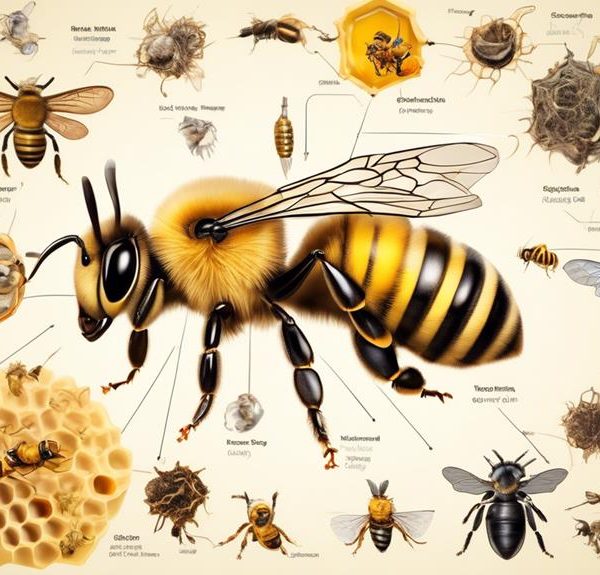Just how invasive are honey bees? Dive into the surprising ecological paradox of these essential-yet-possibly-disruptive pollinators.
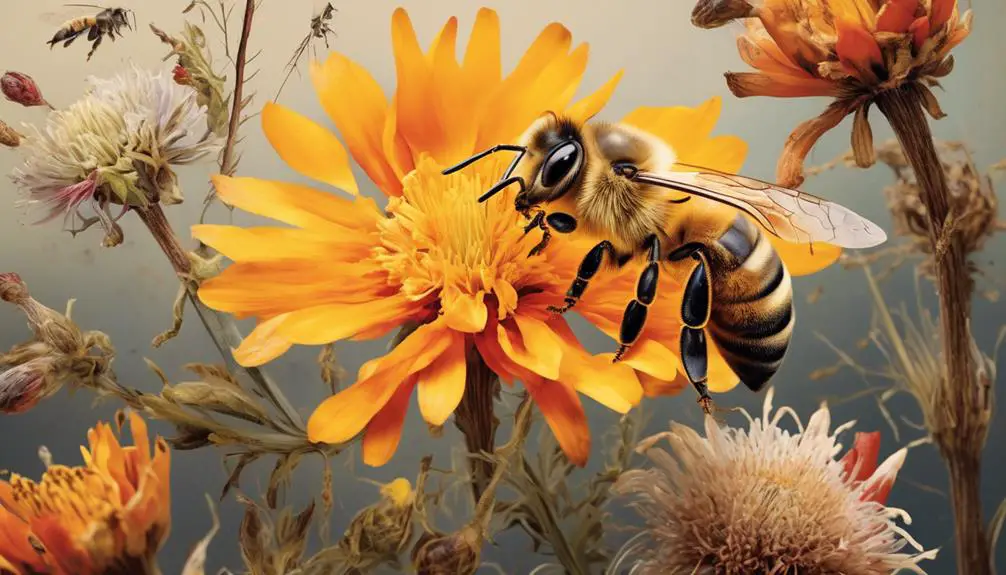
Are Honey Bees an Invasive Species
You've probably heard the theory that honey bees are an invasive species, right? It's a topic that has stirred up quite a buzz in scientific and environmental circles.
Initially, you might view this as a contradiction given the crucial role honey bees play in pollination and, by extension, our food supply. But consider this – not all species that provide benefits are native to their current environments, and sometimes, they can even disrupt local ecosystems.
Hold that thought, as we're about to unravel this intriguing paradox of honey bees being both beneficial and potentially invasive.
Key Takeaways
- Honey bees can have negative impacts on ecosystems by competing with native bees, influencing plant populations, spreading diseases, and disrupting specialized plant-bee relationships.
- The introduction of honey bees into foreign ecosystems has led to unintended consequences such as altering natural reproductive processes and causing ecological disruptions.
- Mitigation strategies for honey bee impacts include monitoring and managing their spread, educating beekeepers about risks, restoring habitats for native pollinators, implementing regulations on bee transport, and balancing ecological benefits.
- It is essential to consider the broader consequences of honey bee presence and take proactive measures to mitigate their potential harm while still acknowledging their importance as premier pollinators.
Understanding Invasive Species

To fully grasp the concept of honey bees as invasive species, it's crucial to first understand what constitutes an invasive species in the realm of biological diversity. An invasive species, by definition, is an organism that's not native to a specific location and has a tendency to spread, causing damage to the environment, economy, or human health. You might think, 'Well, aren't all species somewhat invasive?' Not exactly.
Invasive species are unique in their ability to establish themselves in new environments rapidly, often outcompeting native species for resources. It's not just about being foreign, it's about the impact. You see, not all non-native species are invasive. Some coexist quite harmoniously with native species, causing minimal disruption.
However, the ones that do become invasive can drastically alter ecosystems, leading to a loss of biodiversity. They can change the physical characteristics of an environment, disrupt food chains, and even introduce new diseases. Understanding this distinction is key in identifying whether honey bees fall into this category. Therefore, it's not just about where a species comes from, but the consequences of its presence that matters.
Honey Bees: Natural History
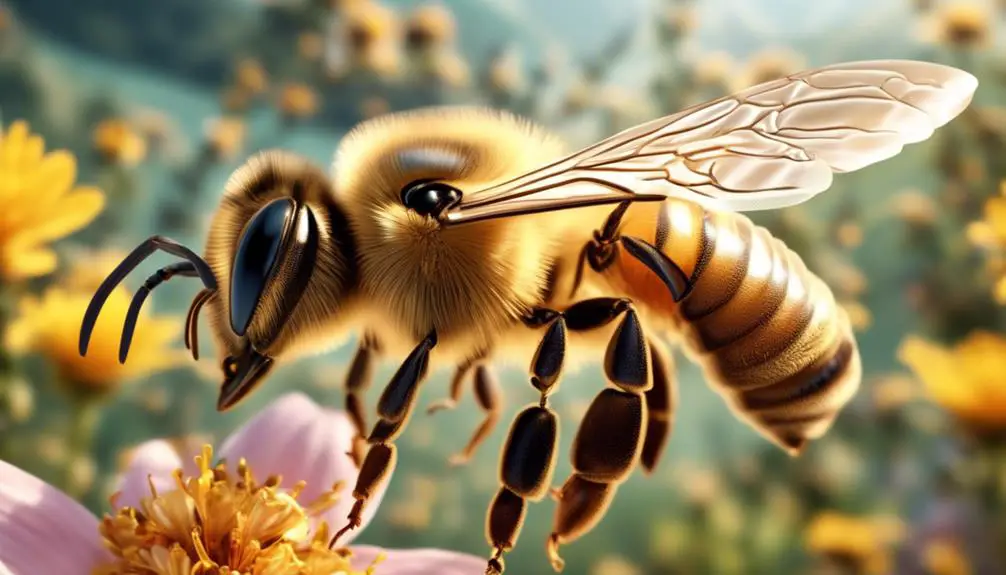
Let's delve into the natural history of honey bees, a journey that begins millions of years ago, long before they ever encountered humans. Fossil records indicate that honey bees first appeared during the Cretaceous period, around 130 million years ago. They've since evolved into seven recognized species and approximately 44 subspecies, each with unique characteristics and behaviors.
You might find it surprising, but bees share a common ancestor with wasps. This divergence occurred when certain wasps started feeding their larvae pollen instead of insect prey, marking the birth of bees as a separate group. Over time, a specific group of these evolved into honey bees, recognized for their unique ability to produce and store honey.
Today's honey bees, specifically the Western honey bee (Apis mellifera), originate from Africa. They spread across Europe and Asia around 300,000 years ago, and were introduced to the Americas by European settlers in the 17th century. This species has since become the world's premier pollinator, playing a crucial role in the global ecosystem and agriculture. While they're not native everywhere, it's hard to imagine a world without them.
Impact of Honey Bees on Ecosystems
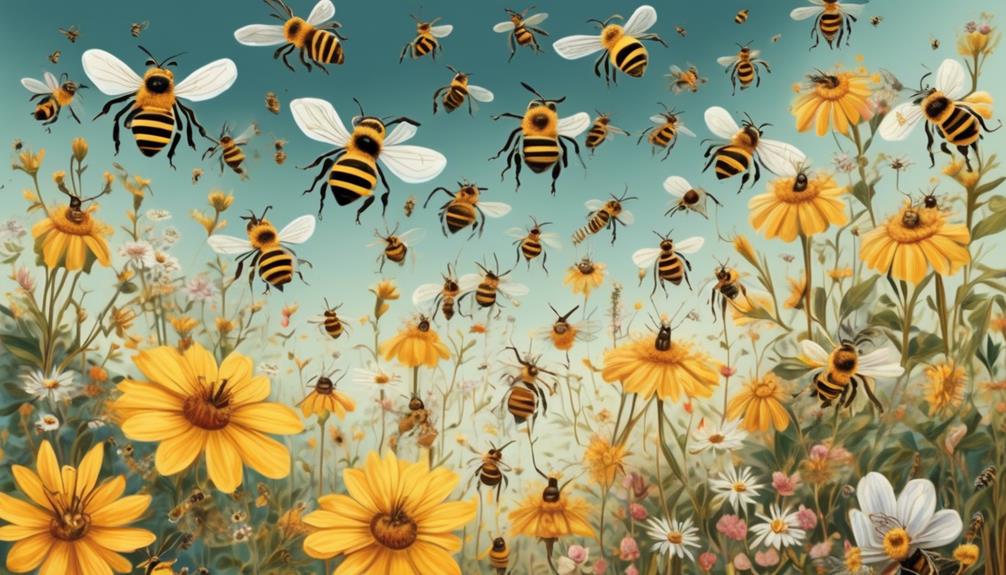
While appreciating the honey bee's fascinating evolution and global spread, it's crucial to examine their impact on ecosystems they've colonized, particularly in regions where they are not native. Honey bees, if not managed properly, can outcompete native pollinators for nectar and pollen. This competition can lead to a decrease in the population of native pollinators, altering the biodiversity of the area.
Honey bees also have an impact on plant reproduction. They often prefer introduced plant species over native ones. This could lead to an increase in the population of invasive plants, further altering the ecosystem.
Here's a brief representation of their impact:
Potential Impact | Example |
|---|---|
Competition with native pollinators | Decrease in native bee populations |
Preference for introduced species over natives | Increase in invasive plant populations |
Disease transmission | Spread of deformed wing virus to wild bees |
Alters plant-pollinator relationships | Disruption of specialized plant-bee relationships |
Habitat degradation | Damage to nests and food sources of native species |
Case Studies: Honey Bees Abroad
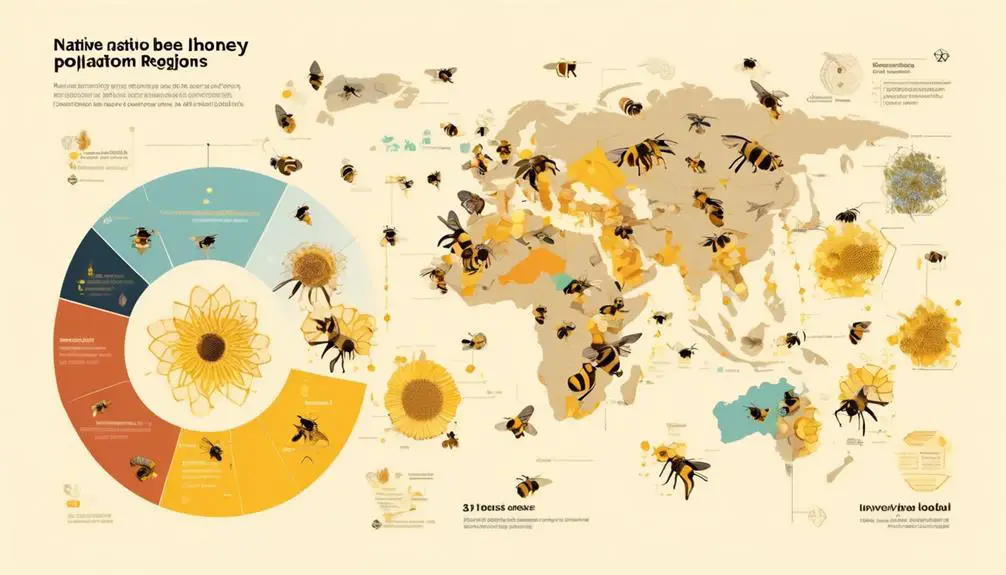
Diving into specific instances, we can examine a few case studies that highlight the impact of honey bees in ecosystems where they've been introduced abroad.
Consider New Zealand, which initially welcomed honey bees for their pollination prowess. However, research shows that in some native forests, they're outcompeting local pollinators and altering the natural reproductive processes of indigenous plants. The honey bees' bias towards certain plants leads to an uneven distribution of pollination, affecting the overall flora diversity.
In Hawaii, honey bees are as much a curse as a blessing. They've contributed significantly to agriculture, but their voracious nectar consumption threatens native bird species. These birds, evolved to feed on specific nectar-rich flowers, are now facing food scarcity due to the invasive honey bees.
Then there's the case of St. Helena, a remote British island. The honey bees, introduced here, have caused a sharp decline in endemic wirebirds due to habitat loss. The bees' aggressive colonization of the native scrubland has decreased the nesting sites for these ground-dwelling birds.
These instances demonstrate the often-unintended consequences of introducing honey bees into foreign ecosystems. Their ability to adapt and dominate can tip the balance, leading to unexpected ecological disruptions.
Mitigation Strategies for Honey Bee Impact

To mitigate the impact of honey bees on foreign ecosystems, it's crucial that we develop and implement strategies that balance both the bees' ecological roles and their potential threats. Understanding their behavior, lifecycle, and interaction with the environment can help us formulate effective measures.
First, you must consider monitoring and managing the spread of honey bees. Surveillance systems can detect early invasions, allowing rapid response to curb their expansion. Beekeeper education is also essential. By understanding the risks of accidental introductions, beekeepers can adopt practices that minimize the likelihood of bee escape.
Second, habitat restoration could be a viable strategy. By enhancing the conditions for native pollinators, you could reduce the reliance on honey bees and their potential dominance. This might involve planting native flora or creating nesting sites for local species.
Lastly, consider legislations and regulations to control the transport of honey bees across borders. Strict enforcement can reduce the risk of unintentional introductions.
However, remember that any mitigation strategy shouldn't compromise the ecological benefits of honey bees, such as pollination. Striking a balance between controlling their impacts and utilizing their ecological roles is a complex but necessary task.
Conclusion
In conclusion, honey bees aren't invasive species by traditional definition. However, their introduction to foreign ecosystems can disrupt local biodiversity.
In some cases, they outcompete native pollinators for resources. While we can't deny their critical role in our food systems, it's important to balance this with maintaining ecological integrity.
As such, implementing mitigation strategies, like hive management and habitat restoration, can help us reduce their impact.


